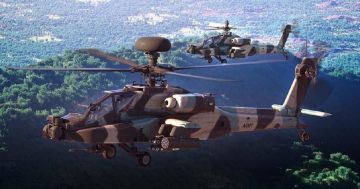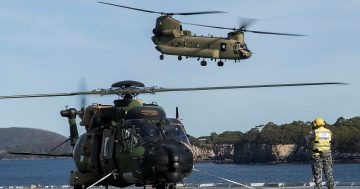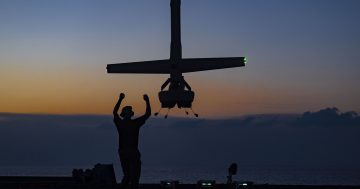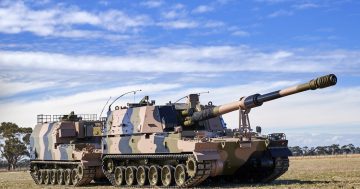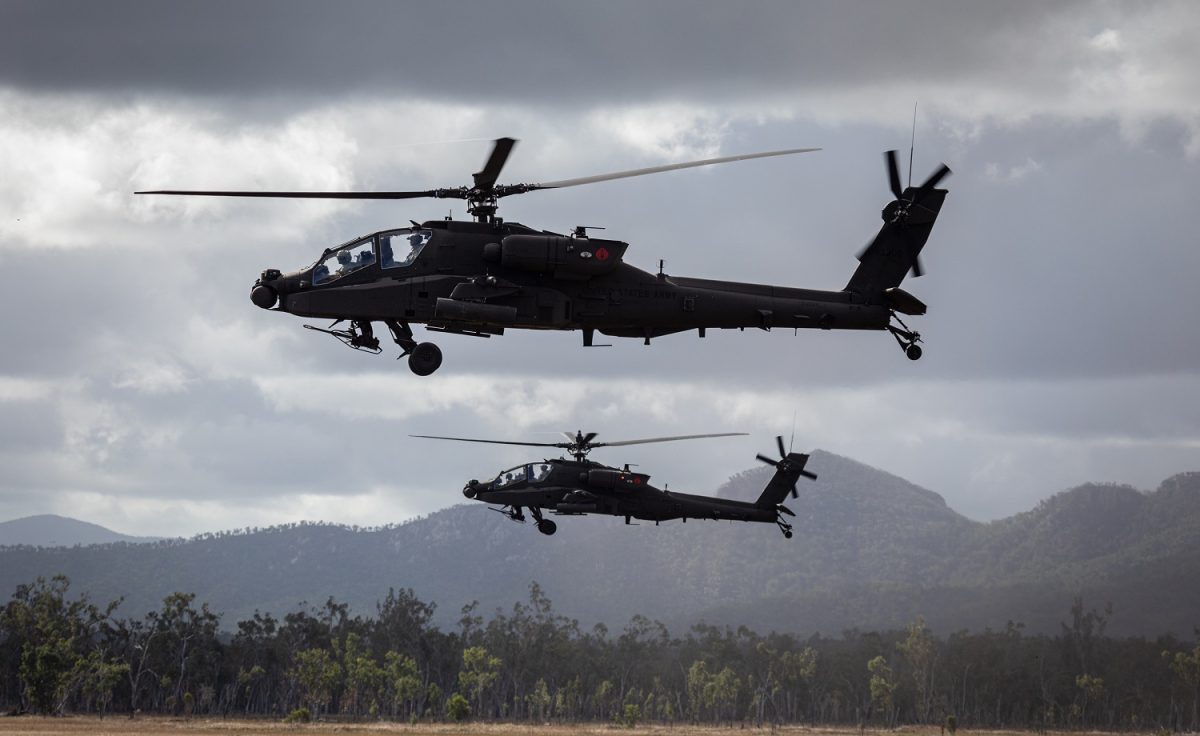
The large and heavily armed Apache will replace Australia’s nimbler Tiger ARH helicopters from 2025. Photo: US Army via ADF.
If the war in Ukraine has shown us anything, it is that the armed and attack helicopter is becoming more and more vulnerable to comparatively cheap anti-aircraft systems and even counter-drone systems.
In two years of fighting, both Russia and Ukraine have lost hundreds of helicopters, including dozens of heavily armed and advanced Russian Ka-50 Black Shark and older but no less feared Mi-24/35 Hind machines.
In the west, many armed forces operate the Boeing AH-64D/E Apache, an advanced derivative of a cold war helicopter designed specifically to destroy Warsaw Pact tanks if they tried to invade western Europe. Despite thankfully never being employed in their intended role, the Apache achieved great success against ground Iraqi vehicles in both the 1991 and 2003 gulf wars.
Australia’s first ‘attack helicopter’ was an armed version of the venerable UH-1H ‘Huey’ Iroquois. A number of Hueys were equipped with door-mounted machine guns and forward-firing rocket pods during the latter stages of the Vietnam War.
Nicknamed ‘Bushrangers’ in Australia, these aircraft served right up until the early 2000s, when they were retired in favour of the Eurocopter Tiger Armed Reconnaissance Helicopter (ARH).
Rather than being an adaptation of a transport or utility helicopter like the Bushranger, the Tiger is a dedicated ARH designed specifically for stealth, speed and manoeuvrability. It is equipped with a chin-mounted three-barrel gun, precision-guided and unguided air-to-surface missiles, and an advanced forward-looking infra-red (FLIR) sensor.
The Tiger was selected ahead of the bigger AH-64D Apache Longbow, ostensibly because of its speed and agility, although the fact that Eurocopter promised to build and maintain the helicopters in a dedicated facility in Australia played a big part in its selection.
But the Tiger – like its larger MRH 90 Taipan stablemate – has not enjoyed a successful career in Australian Army service, suffering initially from poor availability and some performance shortfalls. Despite these issues being largely remedied in recent years, the Tiger will be retired from 2025 in favour of a batch of 29 new AH-64E Apaches at a cost of some $5 billion.
With the lessons of Ukraine in mind, an Australian think tank has called into question the rationale of the Apache acquisition, saying cheaper ‘attritable’ uncrewed systems have already surpassed the capabilities of crewed attack helicopters.
In a recent paper published by the independent Strategic Analysis Australia, former senior analyst at the Australian Strategic Policy Institute (ASPI) Marcus Hellyer likened the Apache buy to investing in coal-fired power stations.
“If your current assets are killing your business model, you don’t acquire more of the same that will be on the books for another 30 years,” he said.
“Yet that is exactly what the Department of Defence is doing with its acquisition of 29 Apache attack helicopters for the non-trivial sum of $5 billion.”
Hellyer says he wrote in 2019 – three years before Russia’s invasion of Ukraine – that Defence shouldn’t rush to replace the Tiger with another crewed system, and should instead invest in affordable, attritable uncrewed systems.
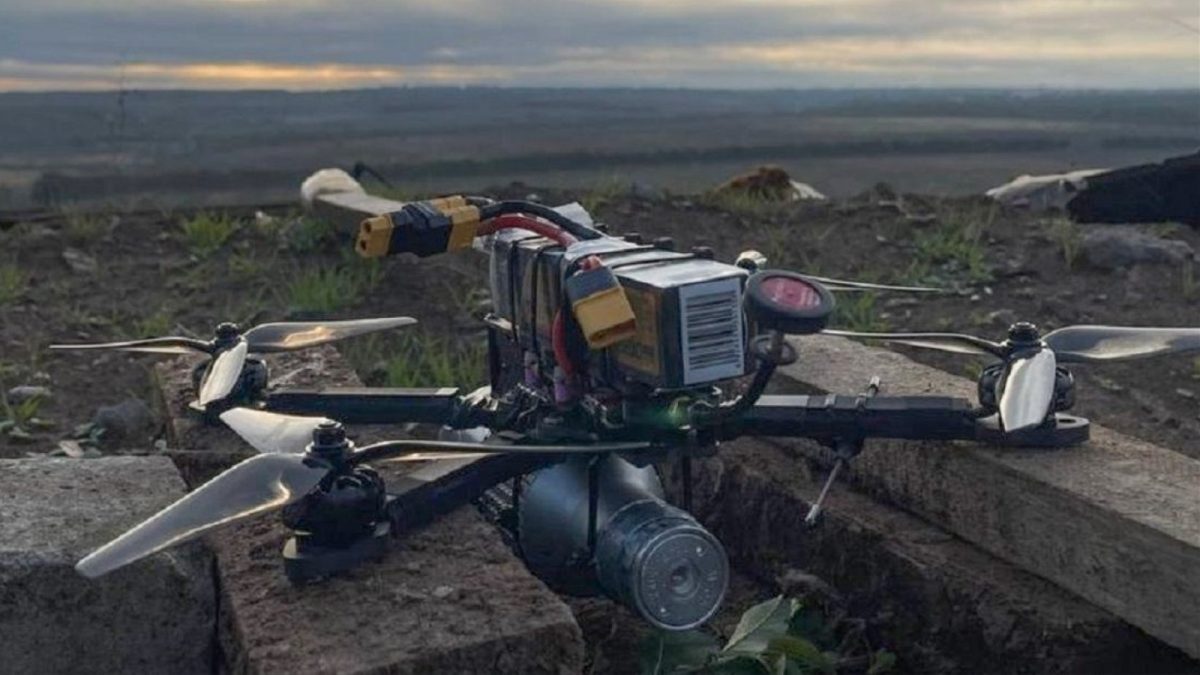
Small, affordable and attritable first-person view (FPV) drones have taken over from crewed helicopters as the weapons of choice in the Russia-Ukraine War. Photo: Ukraine Defence Ministry.
“Even back then you didn’t have to be Nostradamus to see that crewed helicopters would be extremely vulnerable on the modern battlefield against a near-peer adversary,” he said.
“From the very start of [the Russia-Ukraine] war, attack helicopters were being shot out of the sky at a rate that made their traditional role of battlefield reconnaissance and fire support unsustainable,” he added.
“Meanwhile in the same conflict the proliferation of attritable uncrewed systems was already accelerating, leading to the current situation where they have replaced crewed battlefield platforms in many roles while being consumed in the thousands.”
Unlike some near-peer adversaries, Australia has and will likely continue to be very conservative when it comes to the employment of uncrewed systems, ensuring there is always a human in the loop who is able to take over or regain control of an uncrewed system if there is any risk of it operating outside our very strict rules of engagement.
The integration of artificial intelligence into many of these uncrewed systems to better discriminate between legitimate targets and potential collateral damage no doubt keeps ethicists, lawyers and politicians awake at night, despite assurances that AI technology is sound. This is likely a key reason for the ADF’s slow adoption of these systems, and its persistence with crewed systems.
But the US Army’s recent cancellation of its advanced Future Armed Reconnaissance Aircraft (FARA) program designed to ultimately replace its 1200+ Apaches – despite already pouring $3 billion into its development – strongly hints that the future of the crewed helicopter is bleak.
The Australian Army points to the Apache’s advanced datalinks that will allow it to conduct manned-unmanned teaming (MUM-T) operations, essentially the helicopter directing uncrewed systems in attack and reconnaissance operations via a datalink while safely hovering away from ground-based threats.
But as Hellyer points out, these, “… arguments tend to be the fallback position of people desperate to find value in their stranded crewed assets”.
“If you are building a new system unencumbered by those stranded assets, why would you deliberately build it around something that fundamentally limits the possibilities and value of the uncrewed systems?”
Original Article published by Andrew McLaughlin on PS News.












